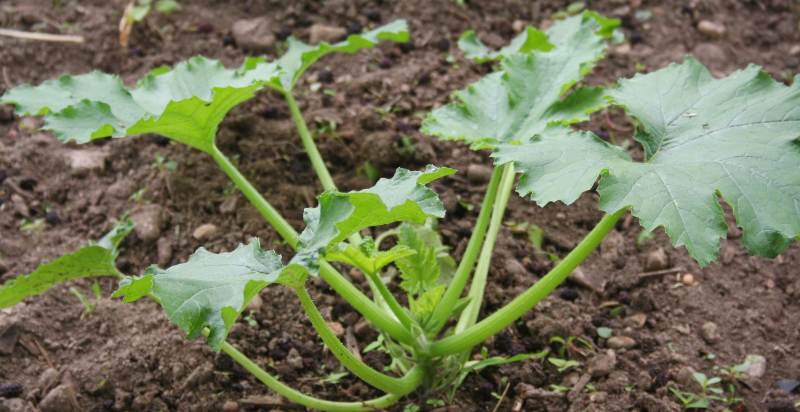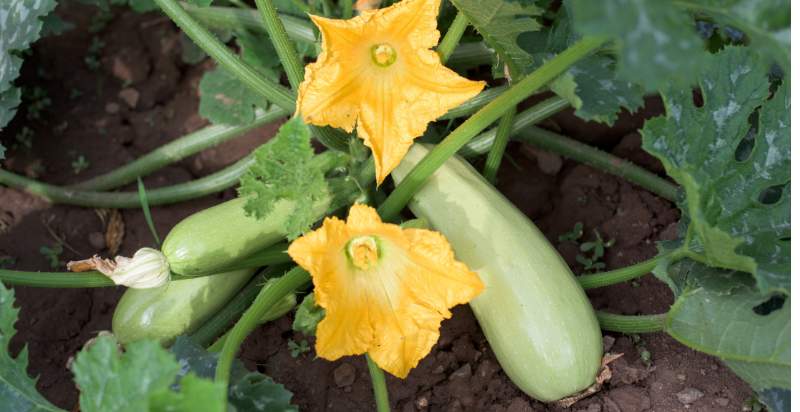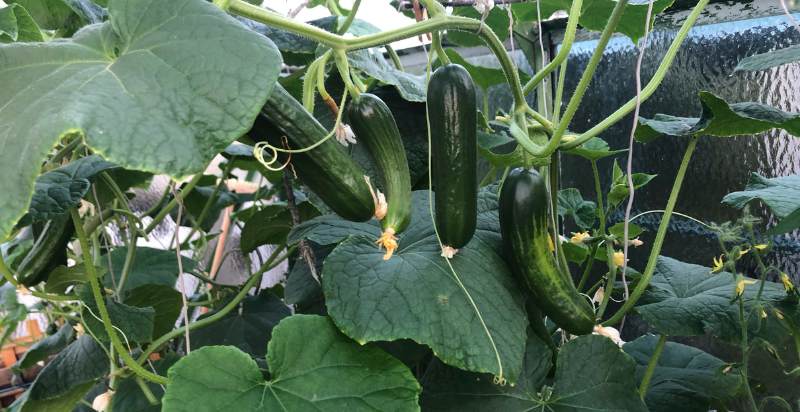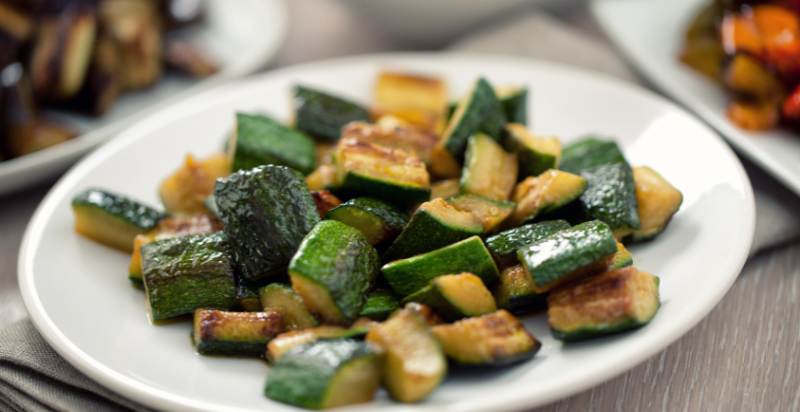Zucchini is a type of summer squash, often referred to as courgette in the UK. It is an easy-to-grow vegetable that thrives in warm weather and requires little care or maintenance. Zucchini has a mild flavor and can be eaten raw or cooked, making it a versatile ingredient for all dishes. Zucchini is an excellent choice if you want to add a nutritional punch to your meals. Here is everything you need to know about this healthy vegetable.
What is Zucchini?
Zucchini is a member of the Cucurbitaceae family, which also includes cucumbers, melons, and squash. It is a cylindrical-shaped vegetable with light green skin and flesh. The fruit typically grows from 6-8 inches in length. Zucchini can also be cooked while still young and tender, allowing its delicate flavor to remain intact.
History and Origin of Zucchini:
Zucchini is native to Central and South America and has been cultivated since the 16th century. It was introduced to Europe in the mid-1700s and eventually made its way to the United States in the early 20th century. Today, zucchini is one of the most popular vegetables grown in home gardens.
Types of Zucchini:
There are two main types of zucchini: the standard variety, usually dark green, and the yellow squash, which is slightly sweeter in flavor. The yellow squash is sometimes called a “summer” or “crookneck” squash.
Nutritional Benefits Of Zucchini:
Zucchini is an excellent source of vitamins and minerals such as vitamins A and C, potassium, folate, and fiber. It also contains a good amount of antioxidants which can help protect against free radical damage and reduce the risk of certain diseases.
In addition, it has anti-inflammatory properties that may help relieve symptoms associated with inflammation. Zucchini is low in calories yet high in essential nutrients, making it a great way to get more nutrition without adding extra calories.
Health Benefits of Zucchini:
- Zucchini is a great source of essential vitamins and minerals. It contains high levels of Vitamin A, C, K, and B-complex vitamins, magnesium, potassium, and manganese. These nutrients help keep our bodies functioning optimally by aiding digestion, strengthening the immune system, and helping to reduce inflammation.
- Zucchini is a low-calorie vegetable, making it an ideal choice for losing or maintaining weight. One cup of cubed, cooked zucchini contains only 33 calories, making it a great addition to any meal plan.
- Zucchini is a source of dietary fiber and can help to maintain regularity while keeping you full between meals. Fiber also helps to reduce cholesterol levels and keeps your digestive system healthy.
- Zucchini is a hydrating food containing 95% water by weight. This can help to keep you hydrated throughout the day and improve your overall health.
- Zucchini is a good source of antioxidants which help to protect your cells from damage and fight off disease-causing free radicals.
How to Plant Zucchini?
Zucchini is a summer squash that can be grown easily in home gardens. It is an excellent addition to any garden and provides a tasty, nutritious vegetable that can be enjoyed all season long. Planting zucchini requires some knowledge and preparation, but with the right steps, you’ll be harvesting your juicy, fresh zucchini in no time.
Start by selecting a sunny location for your zucchini plants. Zucchini needs at least 6 hours of sun each day, preferably 8-10 hours. The soil should be well-draining and high in organic matter like compost or aged manure. Work the soil to a depth of 12-15 inches, breaking up any large clumps and mixing in the organic matter until evenly distributed throughout the soil.
Choose high-quality seeds or young transplants from your local nursery or online store. Plant seeds directly into the garden when all danger of frost has passed, and soils have reached a temperature of 65 degrees F (18 C). To plant seeds, dig a shallow trench 1 inch deep and place 3-4 seeds in each trench. Cover lightly with soil and water to keep the soil moist until the seeds germinate. Once seedlings emerge, thin to a single plant every 2-3 feet.
If using transplants, wait until a few weeks after the last frost date and then dig holes for each transplant about 1-2 inches deeper than the pot in which it was grown. Insert plants into the ground at the same depth as their pots, gently firming the soil around the roots and watering thoroughly after planting. Space out plants approximately 2-3 feet apart.
Once your zucchini has been planted, care is relatively straightforward. Water consistently throughout its growing season to keep soil evenly moist but not soggy or wet – usually around 1 inch per week. Plants may suffer from stress if the soil is too dry and produce fewer fruits. A mulch layer around each plant’s base will help conserve moisture.

How to Care for a Zucchini Plant?
- Planting: Zucchini plant should be planted in a sunny location with well-drained soil. Amend the soil with compost or other organic matter before planting to ensure optimal drainage and nutrients for the plant. Sow seeds 1 to 2 inches deep, spaced approximately 18 to 24 inches apart.
- Watering: Zucchini requires consistent moisture throughout the growing season. Water your plants deeply at least once a week, providing 1 to 2 inches of water each time. Increase watering to avoid wilting and yellowing leaves if the weather is particularly hot and dry.
- Fertilizing: Zucchini needs regular fertilization to produce healthy yields. Feed your zucchini plant with a balanced fertilizer every two weeks during the growing season. If needed, supplement feedings with Epsom salts or liquid seaweed extract to provide additional nutrients and promote larger fruits.
- Pruning: To keep your zucchini plants healthy and productive, pinch off any immature fruit that appears on the plant and any dead or diseased leaves. This will help to promote airflow and prevent disease.
- Pest Control: Zucchini plants are susceptible to various pests, such as cucumber beetles, squash bugs, aphids, and mites. Hand-pick any insects on the plants and use insecticidal soaps or neem oil sprays to remove them if needed.
- Harvesting: Zucchini is best harvested when it’s young and tender, usually between 4 and 8 inches long. Cut the fruit from the vine with a sharp knife or pruners–don’t tug or twist it off as this can damage the plant. Regularly harvesting your fruits will encourage more blooms and yields. Enjoy your zucchini fresh or cooked!
- Winterizing: Zucchini is an annual plant, so you’ll need to start new plants each spring. To prepare for winter, remove all remaining fruits and vines from the garden bed and compost them. Cover the soil with a thick layer of mulch to protect it during cold weather. In regions where temperatures dip below freezing, consider planting zucchini in containers that can be brought indoors during winter. With proper care, your zucchini plants will produce plenty of delicious fruits throughout the season!

Preventions from Pests and Diseases:
- Plant your zucchini in well-drained soil in an area with full sun and good air circulation to help prevent pests or diseases from affecting your plants.
- Choose disease-resistant varieties of zucchini plant if possible.
- Avoid overcrowding when planting, as this can increase pest and disease problems. For example, cucumber beetles love to feed on the leaves of young zucchini plants that are too close together. Minimize their presence by giving your plants plenty of space to grow.
- Use row covers over newly planted seedlings and remove them once they become established and begin growing vigorously. Row covers keep out many common pests, such as cucumber beetles and squash bugs.
- Inspect your plants regularly, looking for signs of pests or disease and taking action promptly when any problems are identified. Common diseases of zucchini include powdery mildew, downy mildew, and blight.
- If needed, use insecticides or fungicides to control pests and diseases on your zucchini plant. Follow the product’s directions carefully for safe and effective use.
- Finally, take steps to improve soil health by adding compost or other organic matter each spring to help ensure strong, healthy plants with good resistance to pest and disease issues throughout the growing season.

How to Harvest Zucchini?
- Zucchini is best harvested when it’s young and tender, usually between 4 and 8 inches long. The smaller fruits will have a sweeter flavor and are less likely to be affected by pests or diseases that can make the fruit inedible.
- To harvest, use a sharp knife or pruners to cut the stem just above where it meets the fruit–don’t tug or twist as this can damage the plant.
- Check your plants daily for ripe fruits, as zucchini can quickly become overgrown if left on the vine for too long!
- Regular harvesting will also encourage more plant blooms and yields.
- Enjoy fresh zucchini immediately, or store it in the refrigerator for up to a week. Cooked zucchini will keep for up to 3 days. Once harvested, remember to leave some fruits on the vine so that your plants can continue producing for you!

How to Store and Preserve Zucchini?
- Freshly harvested zucchini can be stored in the refrigerator for up to a week but should be eaten as soon as possible after harvest for the best flavor and texture.
- You can also preserve excess zucchini by freezing, canning, or pickling it. To freeze, wash, trim and slice into chunks before blanching for about 3 minutes and then cooling in an ice bath. Place in airtight containers or resealable bags and freeze for up to 8 months.
- To can, follow a safe canning recipe and process the jars according to the recipe’s instructions. Canned zucchini will last up to 18 months on your shelf.
- To pickle, prepare a brine solution with vinegar, water, sugar, salt, and spices and pour it over your prepared zucchini slices in a jar or other container with an airtight lid. Refrigerate for at least two weeks before eating–pickled zucchini should last up to 6 months in the refrigerator!
How to Use Zucchini?
Zucchini is a great ingredient to add to any recipe. Its mild flavor makes it an excellent choice for adding to pasta, stews, salads, stir-fries, and even desserts. Here are some of the best ways to use zucchini in your cooking:
- Grilled Zucchini: Slice zucchini into 1/4 inch thick slices, brush with olive oil, and sprinkle with salt and pepper. Grill over medium-high heat until lightly browned and tender. Serve with a squeeze of fresh lemon juice or balsamic vinegar glaze.
- Baked Zucchini Fries: Cut zucchini into long thin strips, dip in beaten egg, coat in breadcrumbs, and bake at 400°F for 15-20 minutes. Serve with a side of your favorite dipping sauce.
- Zucchini Noodles: Spiralize zucchini into long strands to create “zoodles,” which can be used as a low-carb substitute for traditional pasta dishes. Add the noodles to soups, stir-fries, or casseroles for extra nutrition and flavor.
- Shredded Zucchini: Grate zucchini and add it to pancakes, muffins, bread, or quickbreads for moisture and nutrition. It can also be used as an alternative to shredded cheese in quesadillas or tacos.
- Zucchini Lasagna: Layer thin slices of zucchini with ricotta, mozzarella, and your favorite pasta sauce for an easy, low-carb lasagna. Bake until the cheese is melted and bubbly.
These are just a few ideas for using zucchini in recipes – the possibilities are endless! Experiment to find your favorite ways to enjoy this versatile vegetable.

Potential Risks from Zucchini:
- Allergic Reaction: Like all vegetables, zucchini may cause an allergic reaction in some individuals. Symptoms of a zucchini allergy can range from mild (hives, rash, or itching) to severe (anaphylactic shock). If you experience any of these symptoms after eating zucchini, seek medical attention immediately.
- Pesticide Residue: Zucchinis are susceptible to pests and diseases, and as such many commercial growers use chemical pesticides to protect their plants. Be sure to purchase organic whenever possible and wash your produce thoroughly before consuming it.
- Excessive Consumption: Eating too much zucchini can lead to digestive issues such as gas, bloating, and diarrhea. To prevent this, limit your intake to 2 cups per day.
- Cross-Contamination: If you’re growing zucchini yourself, it’s important to properly isolate your plants from other products to avoid cross-contamination of disease or pests. Also, use separate cutting boards and utensils when harvesting and preparing zucchini.
By employing the tips above and understanding the potential risks associated with consuming zucchini, you can enjoy this nutritious vegetable safely!
Storing & Preserving Zucchini:
- Harvesting – When harvesting zucchinis, it’s best to pick them when they’re smaller (less than 5 inches in length) as larger zucchinis can be tougher and have fewer nutrients.
- Freezing – Zucchini can easily be frozen for up to 10 months. To do this, wash and cut the zucchini into slices or cubes, then blanch them in boiling water for three minutes before submerging them in an ice water bath. Drain the pieces completely, place them on a baking sheet lined with parchment paper and freeze until solid. Transfer to a freezer-safe container or bag and store in the freezer until ready to use.
- Canning – Zucchini can also be canned using a pressure canner. Start by washing and cutting the zucchini into small pieces, then blanch in boiling water for three minutes. Place the pieces in hot jars along with a teaspoon of lemon juice and seal the lids. Process in a pressure canner for 35 minutes at 10 pounds of pressure. Allow the jars to cool before storing them in a cool, dark place until ready to use.
By following these tips, you can preserve your zucchini for months! Enjoy!
Conclusion:
Zucchini is an incredibly versatile vegetable that’s packed with nutrients and flavor. Whether you’re looking to grill, bake, spiralize, or freeze it, there are countless ways to enjoy this summer squash. Keep an eye out for potential risks such as allergies, pesticide residue, and cross-contamination to keep yourself safe. With some knowledge and preparation, you can confidently incorporate zucchini into your meals all year round!
- Everything You Wanted to Know About Red Tamarillos - June 2, 2025
- A Guide to Tulips: Everything You Need to Know & More… - June 2, 2025
- Guanabana: Description, Flavor, Benefits, And Uses - May 27, 2025

23 thoughts on “What is Zucchini? How to Plant, Grow, and Harvest Zucchini”
Comments are closed.